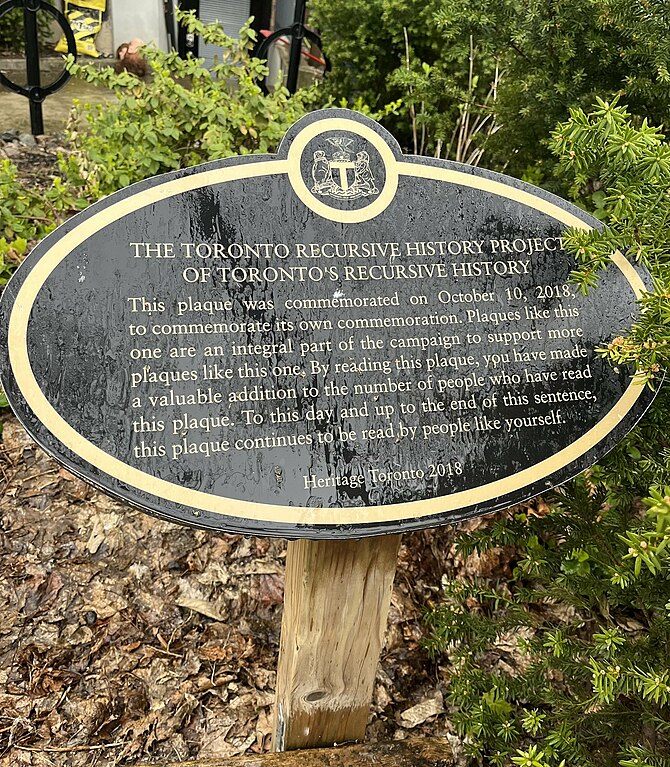
Noted


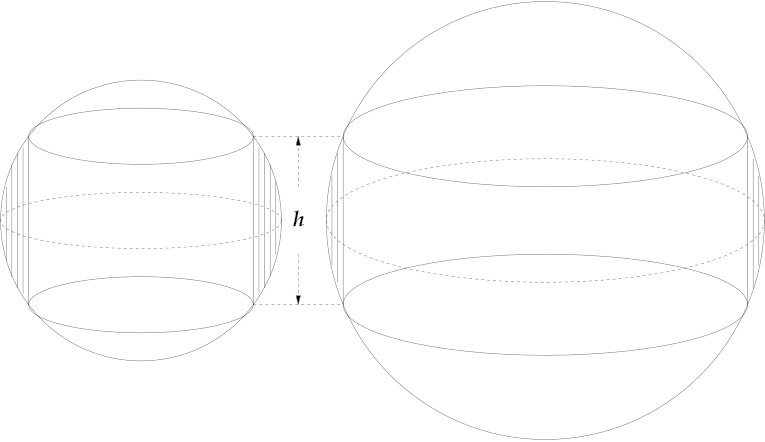
Drill a hole straight through the center of a sphere, leaving a band in the shape of a napkin ring. Suppose the height of this band is h. Now take a sphere of a different size and drill a hole through that, contriving the hole’s width so that its depth is again h. Remarkably, the two napkin rings will have the same volume.
As the sphere expands, the band must grow both wider and thinner, and it turns out that these two effects exactly cancel one another. It’s called the napkin ring problem.
Just a striking image: German astronomer Johann Friedrich Julius Schmidt prepared a plaster moon for the Field Columbian Museum in 1898. From the Field Museum Library.
William Linkhaw sang so badly that a grand jury indicted him for disrupting his church’s services. At trial in August 1872, a witness imitated Linkhaw’s singing style and provoked “a burst of prolonged and irresistible laughter, convulsing alike the spectators, the Bar, the jury and the Court.”
It was in evidence that the disturbance occasioned by defendant’s singing was decided and serious; the effect of it was to make one part of the congregation laugh and the other mad; that the irreligious and frivolous enjoyed it as fun, while the serious and devout were indignant.
Linkhaw protested that he felt a duty to worship God. The jury fined him a penny, but the North Carolina Supreme Court set aside the verdict, observing that Linkhaw had had no malicious intent. Justice Thomas Settle wrote, “It would seem that the defendant is a proper subject for the discipline of his church, but not for the discipline of the Courts.”
In 1906 a wit wrote, “although the proof did show / That Linkhaw’s voice was awful / The judges found no valid ground / For holding it unlawful.”

Students beginning with the compass learn to draw this rosette, sometimes called the Flower of Life. If the arcs and the circle have the same radius, a, then the area of one petal is
and the unshaded area of the circle is
Remarkably, though the area we sought is bounded entirely by the arcs of circles, the final expression is independent of π.
Related: When two cylinders of radius r meet at right angles, the volume of their intersection is 16r3/3 — again, no sign of π.
(J.V. Narlikar, “A Pi-Less Area,” Mathematical Gazette 65:431 [March 1981], 32-33.)
10/01/2024 UPDATE: Some deft rearranging shows that the unshaded area of the circle is just the area of an inscribed regular hexagon:
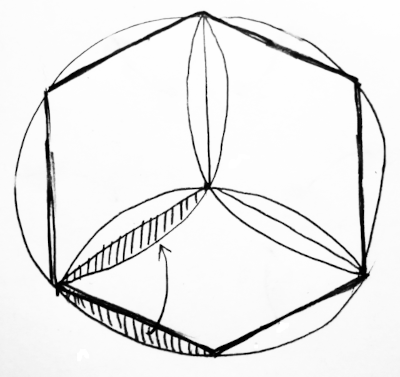
So the absence of π isn’t that surprising. Thanks to readers Catalin Voinescu (who sent this diagram) and Gareth McCaughan for pointing this out.
C.S. Kipping published this unusual problem in Chess Amateur in 1923. In each position, White is to mate in two moves.

Then there is the other secret. There isn’t any symbolysm. The sea is the sea. The old man is an old man. The boy is a boy and the fish is a fish. The shark are all sharks no better and no worse. All the symbolism that people say is shit. What goes beyond is what you see beyond when you know. A writer should know too much.
— Ernest Hemingway, letter to Bernard Berenson, 1952
Suppose you have a collection of gears pinned to a wall (disks in the plane). When is it possible to wrap a conveyor belt around them so that the belt touches every gear, is taut, and does not touch itself? This problem was first posed by Manuel Abellanas in 2001. When all the gears are the same size, it appears that it’s always possible to find a suitable path for the belt, but the question remains open.
Erik Demaine, Martin Demaine, and Belén Palop have designed a font to illustrate the problem — each letter is a collection of equal-sized gears around which exactly one conveyor-belt wrapping outlines an English letter:

Apart from its mathematical interest, the font makes for intriguing puzzles — when the belts are removed, the letters are surprisingly hard to discern. What does this say?

MIT computer scientist Gerald Sussman offered this example to show the importance of sophisticated planning algorithms in artificial intelligence. Suppose an agent is told to stack these three blocks into a tower, with A at the top and C at the bottom, moving one block at a time:
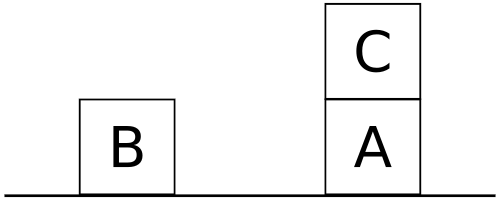
It might proceed by separating the goal into two subgoals:
But this leads immediately to trouble. If the agent starts with subgoal 1, it will move C off of A and then put A onto B:
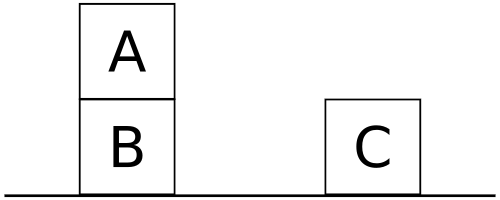
But that’s a dead end. Because it can move only one block at a time, the agent can’t now undertake subgoal 2 without first undoing subgoal 1.
If the agent starts with subgoal 2, it will move B onto C, which is another dead end:
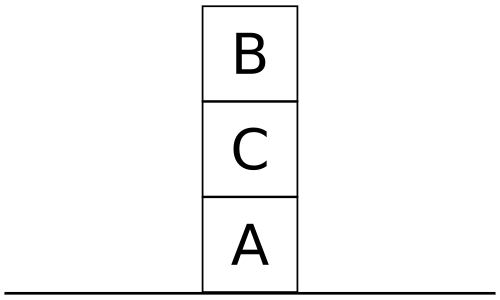
Now we have a tower, but the blocks are in the wrong order. Again, we’ll have to undo one subgoal before we can undertake the other.
Modern algorithms can handle this challenge, but still it illustrates why planning is not a trivial undertaking. Sussman discussed it as part of his 1973 doctoral dissertation, A Computational Model of Skill Acquisition.